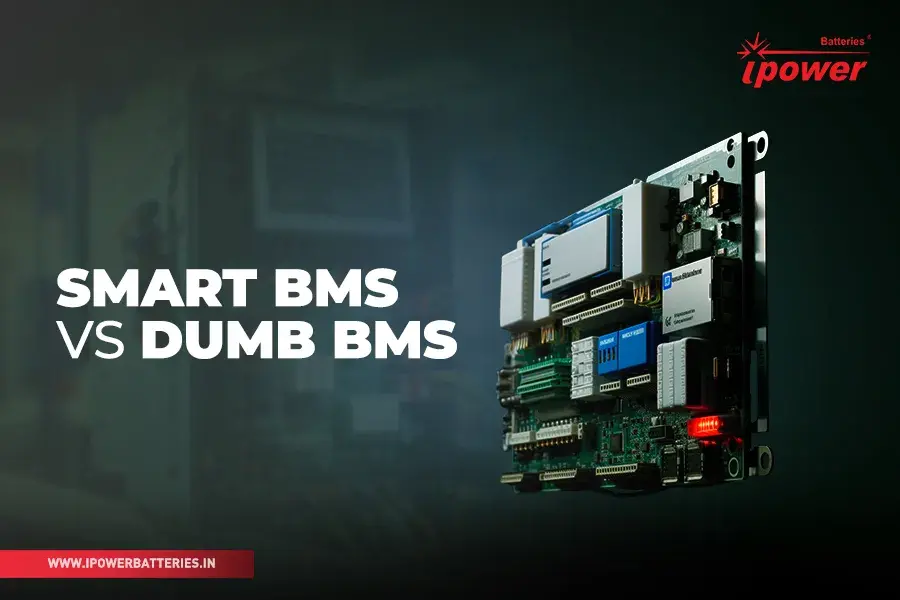Smart BMS vs. Dumb BMS: Unleashing the Potential of Battery Management Systems
Battery Management Systems (BMS) play a crucial role in the performance, safety, and longevity of batteries, making them an essential component in various applications such as electric vehicles (EVs), renewable energy systems, and portable electronics. BMS technology has evolved over the years, leading to the development of two main categories: Smart BMS and Dumb BMS. In this blog, we will delve into the differences, advantages, and disadvantages of these two types of BMS to help you understand their respective capabilities and applications.
Smart BMS: Harnessing Advanced Capabilities
- Real-time Monitoring and Data Analysis: Smart BMS is equipped with advanced sensors and communication modules that allow real-time monitoring of battery parameters. These parameters include voltage, current, temperature, and state of charge (SoC). The data collected is analyzed to ensure optimal battery performance and safety.
- Predictive Maintenance: One of the standout features of a Smart BMS is its ability to predict and prevent potential battery issues. By continuously monitoring battery health and performance, it can identify anomalies or deteriorations early on, allowing for timely maintenance or replacement, thus preventing costly downtime.
- Balancing and Cell Equalization: Smart BMS can actively balance individual cells within a battery pack. This process, known as cell equalization, ensures that each cell operates at the same voltage level, maximizing the overall capacity and lifespan of the battery.
- Communication and Remote Control: Smart BMS can communicate with external devices and systems, enabling remote control and monitoring. This capability is particularly useful in EVs, where data can be transmitted to a central server for diagnostics and fleet management.
- Thermal Management: Advanced thermal management is another feature of Smart BMS. It can control cooling or heating systems to maintain the optimal temperature range, preventing overheating or freezing, which can damage the battery.
- Adaptive Algorithms: Smart BMS utilizes adaptive algorithms that can optimize battery charging and discharging patterns based on usage patterns and environmental conditions. This improves battery efficiency and extends its lifespan.
- User-friendly Interfaces: Smart BMS often comes with user-friendly interfaces, including mobile apps or web portals, allowing users to monitor and control their batteries with ease.
Dumb BMS: Simplicity and Reliability
- Basic Voltage and Current Monitoring: Dumb BMS primarily focuses on basic voltage and current monitoring. It offers protection against overcharging and over-discharging, ensuring battery safety but lacking the advanced features of a Smart BMS.
- Cost-effectiveness: Dumb BMS systems are typically more affordable than their smart counterparts, making them a practical choice for applications where advanced features are not necessary.
- Reliability and Robustness: Due to their simplicity, Dumb BMS solutions are often considered more reliable and robust in harsh environments. They have fewer components that can fail, leading to increased durability.
- Low Power Consumption: Dumb BMS systems typically consume less power than Smart BMS, making them suitable for applications where energy efficiency is critical.
- Limited Communication: Dumb BMS lacks the extensive communication capabilities of Smart BMS, which may limit its ability to integrate with external systems or provide remote monitoring and control.
Choosing the Right BMS for Your Application
The choice between a Smart BMS and a Dumb BMS depends on the specific requirements and priorities of your application. Here are some considerations to guide your decision:
- Application Complexity: For critical applications such as EVs or renewable energy systems, where real-time monitoring, predictive maintenance, and advanced control are essential, a Smart BMS is the preferred choice.
- Budget: If cost is a significant factor and advanced features are not necessary, a Dumb BMS may be a more budget-friendly option.
- Environment: Consider the environmental conditions in which your battery system will operate. Dumb BMS may be more suitable for harsh or remote environments due to its simplicity and reliability.
- Integration and Communication: Evaluate whether your application requires communication and integration capabilities. If you need remote monitoring or data sharing, a Smart BMS is the way to go.
Conclusion
Battery Management Systems are pivotal in ensuring the efficient and safe operation of batteries in various applications. Smart BMS offers advanced features such as real-time monitoring, predictive maintenance, and adaptive algorithms, making it suitable for complex and critical applications. On the other hand, Dumb BMS provides simplicity, reliability, and cost-effectiveness, making it a practical choice for less demanding scenarios. The decision between the two depends on your specific requirements and priorities, with the ultimate goal of maximizing battery performance, safety, and longevity.





